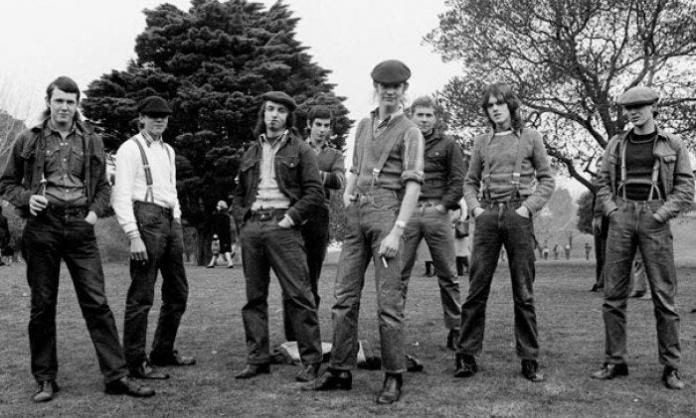The media are absolutely relentless when it comes to demonising the “un-Australian” behaviour of Sudanese youth.
The latest threat to the very fabric of white Western civilisation occurred in the outer Melbourne suburb of Taylors Hill, when a crowd of 50 or so South Sudanese teenagers gathered to watch a fight between four young women.
The cops went ballistic, mobilising the riot squad, the mounted police, the dog squad and a police helicopter, while a hysterical media evoked fears of Armageddon over a so-called brawl in which no-one was injured.
But what could be more quintessentially Australian than a crowd of teenagers gathering to watch some of their friends have it out? It is a long tradition going back to the earliest days of the British invasion of this continent.
When I was a teenager in the 1960s, part of the attraction of the Saturday night dances at Heidelberg Town Hall was precisely the thrill of the fight afterwards. Huge crowds would gather on Heidelberg Road to get a bit of the action – a lot cheaper than paying for a ringside seat at the house of stoush, Festival Hall. I cannot remember the riot squad turning up even once.
My old school, Marcellin, was nowhere near to being the roughest in Melbourne, but fights on the playground at lunch time were a dime a dozen.
A fight in which I gave one of my friends David Hurley a blood nose was fairly typical. A large crowd of kids gathered around to urge us on as we crudely slugged it out. Our teachers (the Marist brothers) did nothing to stop it.
The dog squad was not called to break it up. Riot cops did not invade the playground. No police horses galloped up, and no police helicopter hovered overhead. There were no arrests.
As the “winner”, I was given a caning by one of the brothers. David’s blood nose was deemed sufficient punishment for his part in the fight.
Though more blood was spilled in this “brawl” than in the recent fight at Taylors Hill, there was absolutely no media coverage and no hysteria about youth gangs out of control. No Liberal politicians decried the collapse of law and order and demanded mass arrests and harsher penalties.
When it comes to real gang violence, the Melbourne sharpies of the 1960s and 1970s make today’s South Sudanese supposed gangs seem incredibly tame. The sharpies were really tough white working class youth.
Year in, year out, there were innumerable brutal fights between sharpies and mods, or with the bouncers who tried to keep them out of dances. Most notoriously, there was an all-in riot outside the old Southern Cross Hotel in Bourke Street. Gangs armed with bike chains and other assorted weapons had it out.
The police were usually too frightened to intervene. The area around the high rise Housing Commission flats in Elgin Street, Carlton, became a no go area for cops after kids dropped a fridge from the roof onto a police van.
Young people join gangs in a quest for some form of collective solidarity, and as an instinctive protest against the alienation of working class life and the sheer boredom of their existence. For Sudanese youth, that sense of alienation and frustration is compounded by the racist demonisation they constantly face.
But this latest case didn’t even rise to the level of run-of the-mill youth gang brawling. It was just a bunch of kids getting together to watch a fight – an activity that indicates Sudanese young people have assimilated into Australian culture just fine.
----------
Red Flag attempted to contact David Hurley to confirm the veracity of the claims made by Armstrong in this article, but were unable to do so by deadline.











